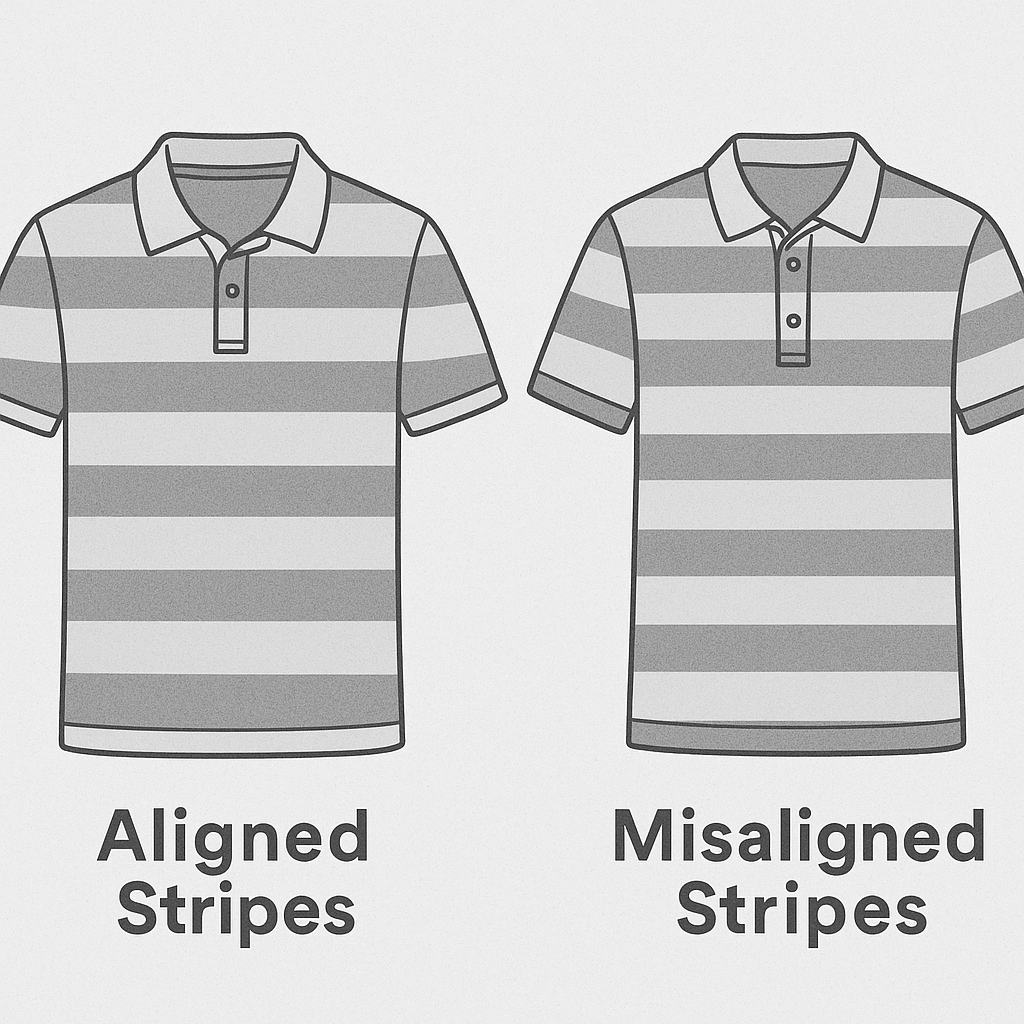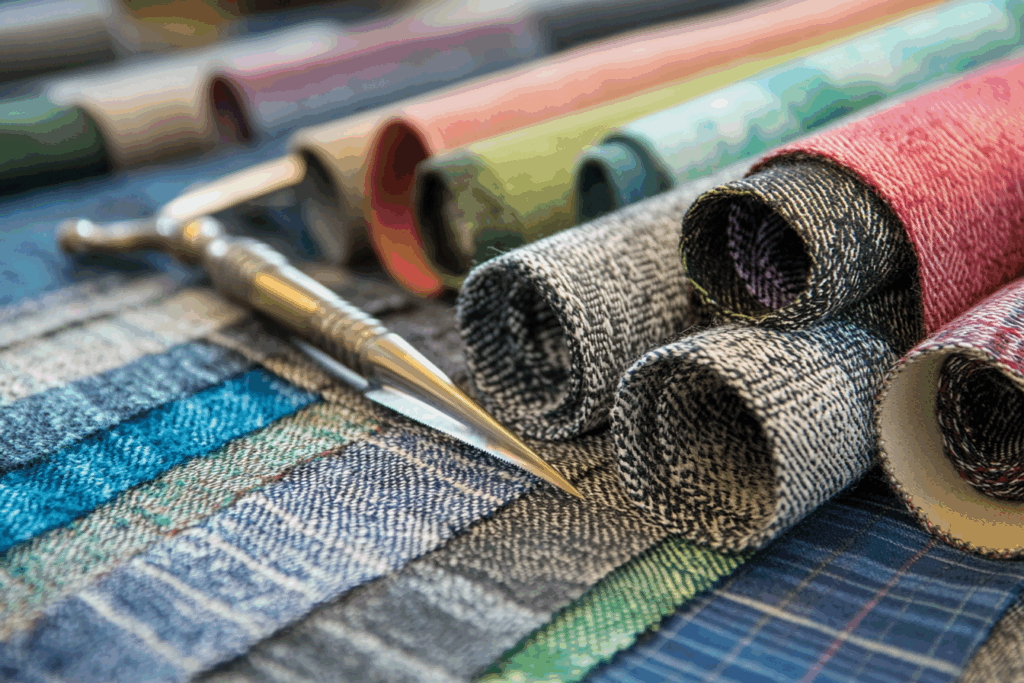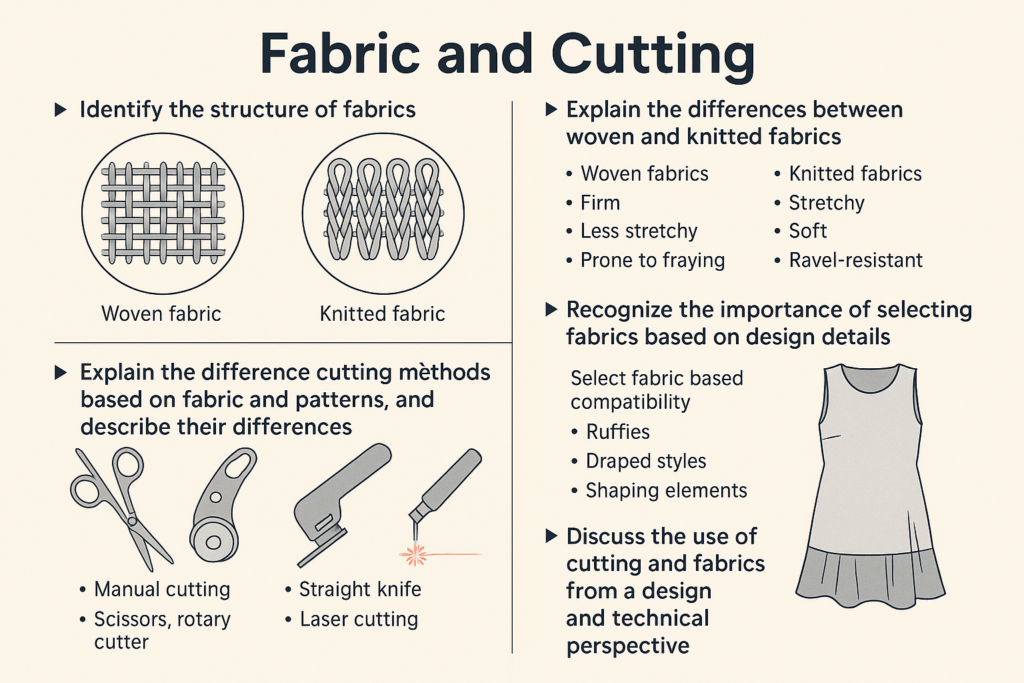🧵 Stripe Fabric Cutting Techniques: Achieving Alignment & Quality in Garment Manufacturing
Introduction
Striped fabrics offer a timeless design element in garments—from elegant pinstripe suits to casual rugby shirts. However, stripe alignment plays a crucial role in garment quality and visual appeal. Misaligned stripes, especially at the side seams or placket, can result in a poorly constructed look—even if the fabric is premium.
Understanding Stripe Directionality
Stripes typically fall into two layout categories:
- Vertical Stripes: Run from top to bottom; commonly used in shirts, trousers, and dresses.
- Horizontal Stripes: Run side to side; appear in sportswear, casual tees, and sweaters.
While vertical stripes are easier to work with, horizontal stripe alignment requires greater attention, especially at the following:
- Side seams
- Sleeves-to-body connection
- Front panels with plackets
- Pockets and hem trims
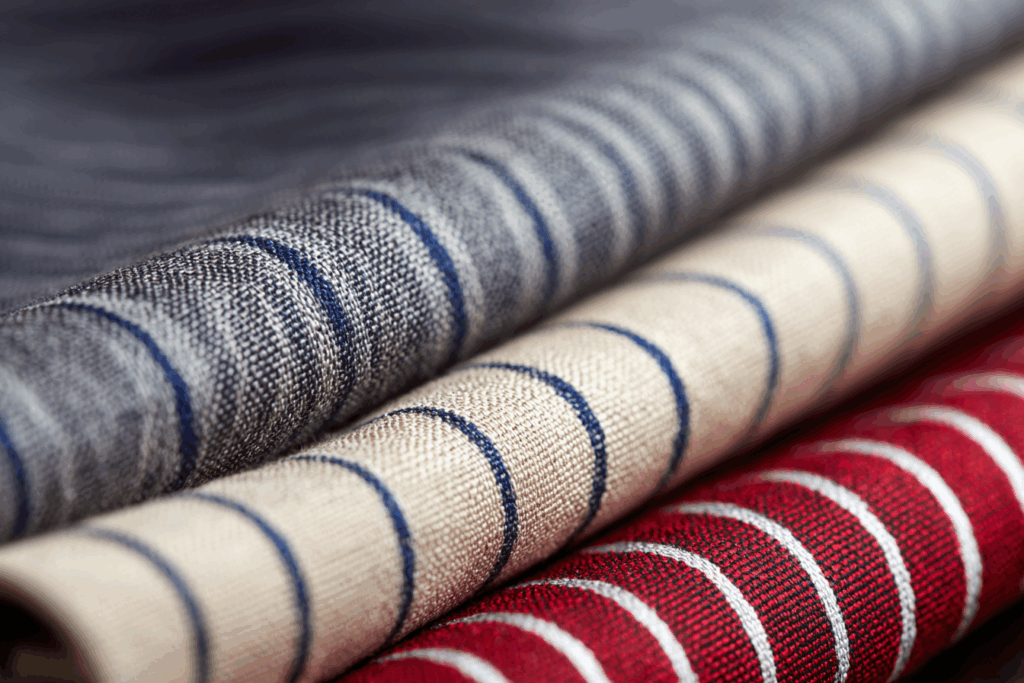
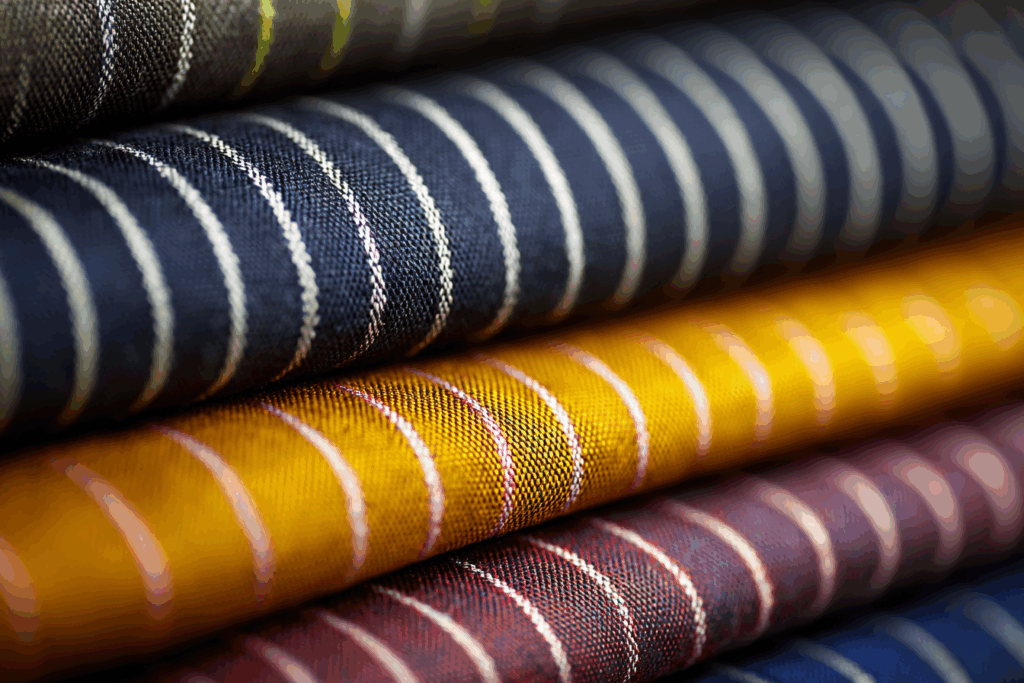
Pattern Alignment: Quality vs. Cost
Let’s compare two real-world stripe layout examples:
✅ Figure A: High-Quality Stripe Alignment
- The golf shirt features clean stripe continuity:
- Sleeves aligned across the chest
- Stripe flow maintained from front to back
- Placket is built into the front panel (not separate), improving alignment
- The result: a premium look, symmetry, and comfort
❌ Figure B: Misaligned Stripes (Cost-Saving Layout)
- Fabric is cut without regard for unidirectional alignment
- Sleeves and side seams are not matched
- Placket is a separate piece, making it harder to align with body stripes
- Although cheaper to produce, the result looks visually random and low-end
Common Garment Areas Requiring Stripe Alignment
| Area | Vertical Stripes | Horizontal Stripes | Notes |
|---|---|---|---|
| Front Placket | Easy | Needs alignment | Built-in plackets help alignment |
| Side Seams | Less visible | Highly visible | Stripe mismatch is very noticeable |
| Patch Pockets | Requires care | Requires care | Should match the background stripes |
| Sleeves | Needs consideration | Needs alignment | Ensure alignment with body and chest |
| Back Panel | Important for symmetry | Important | Especially with centered patterns or yokes |
Key Design Tips for Working with Stripes
- Choose one-way stripe layout for visual consistency.
- Build plackets into the body panel where possible.
- Use pattern matching software or manual markers to ensure layout accuracy.
- Always test stripe flow with samples before bulk production.
- Provide clear cutting instructions (e.g. “align across front body”, “match side seams”).
Conclusion
When it comes to striped fabrics, visual alignment is a hallmark of quality. High-end garments prioritize stripe flow across all panels, while budget production may compromise pattern continuity to reduce waste. If your brand values craftsmanship, mastering stripe alignment in cutting and sewing will enhance customer satisfaction and elevate your product’s perceived value.
